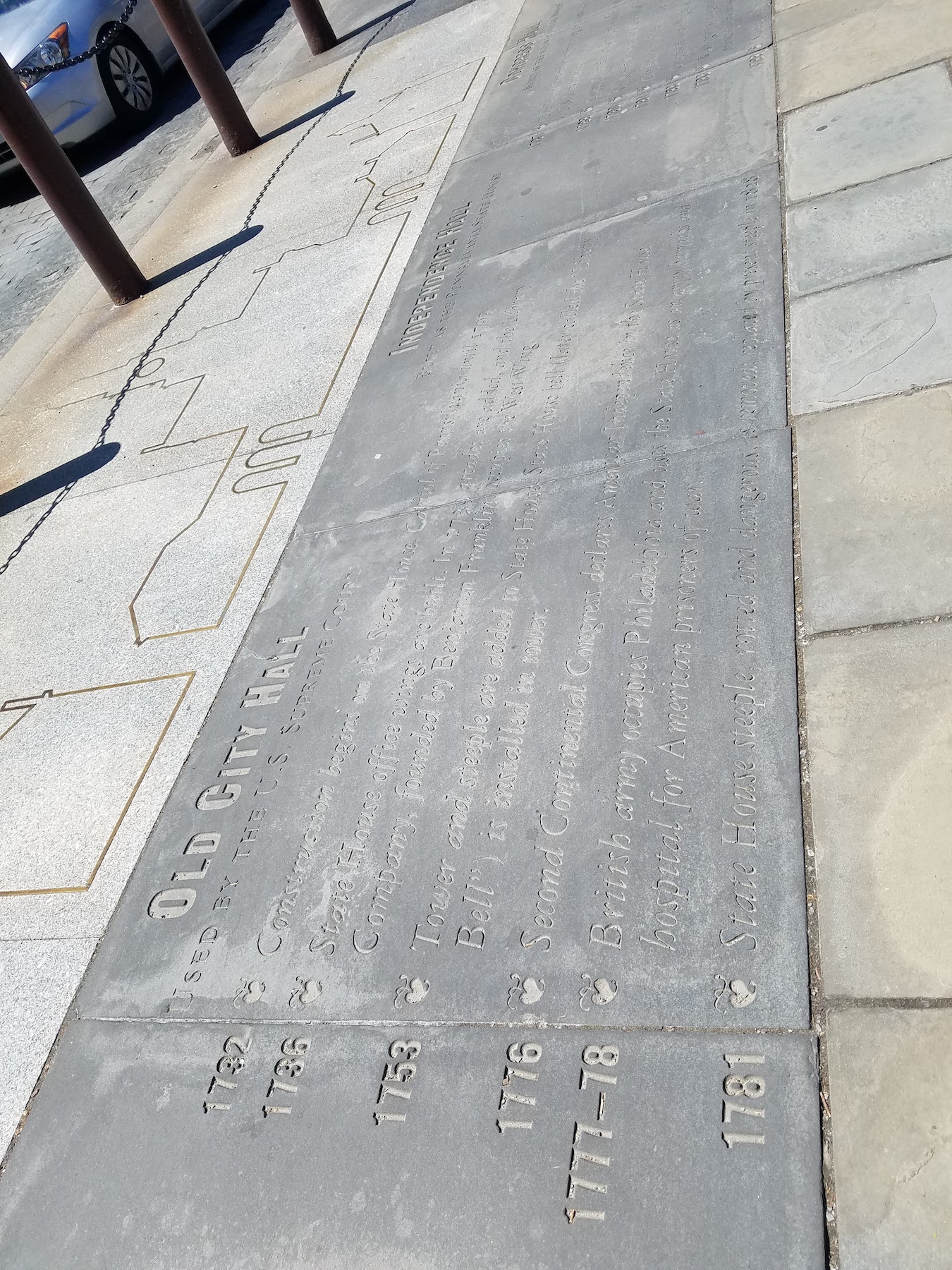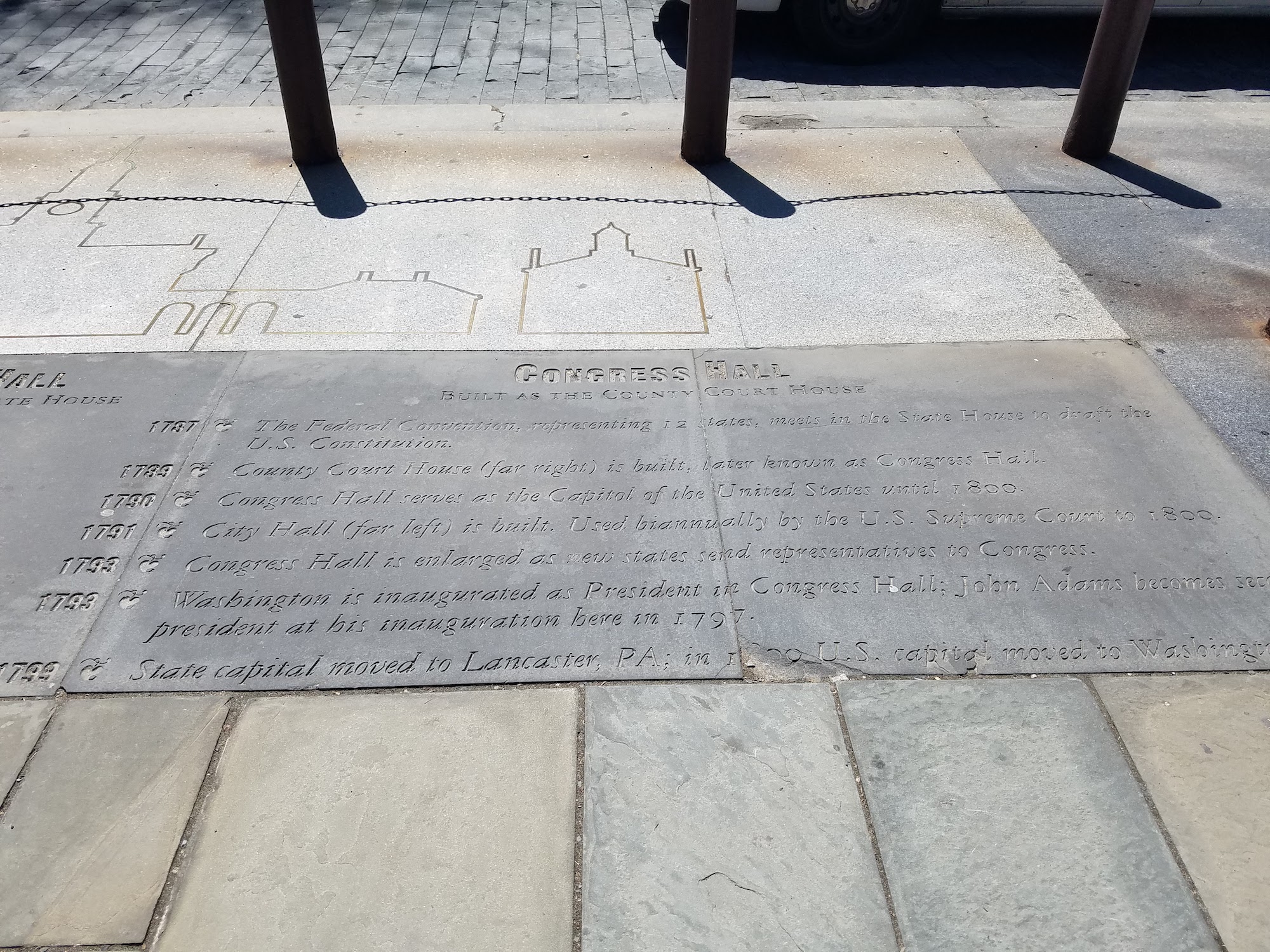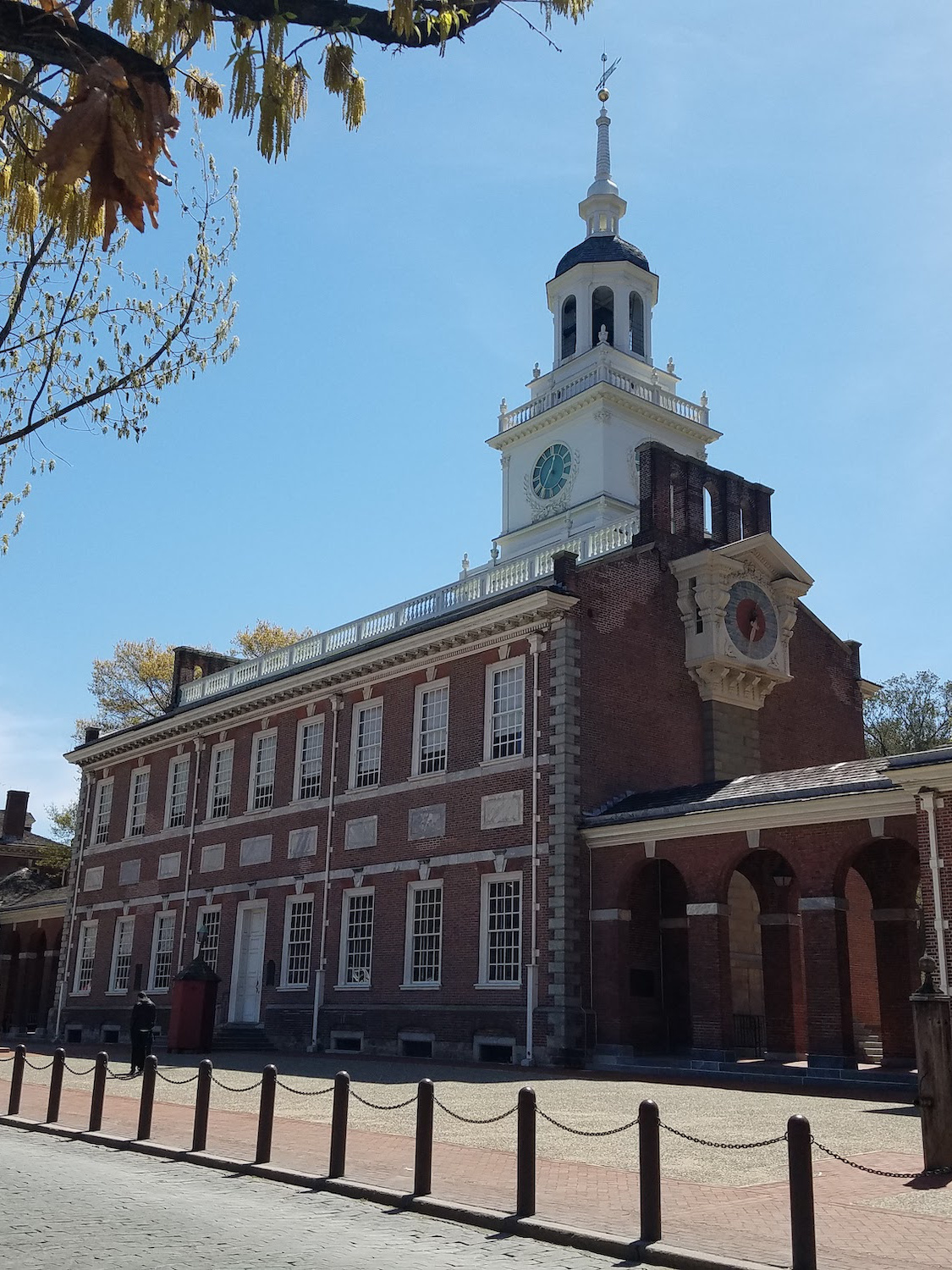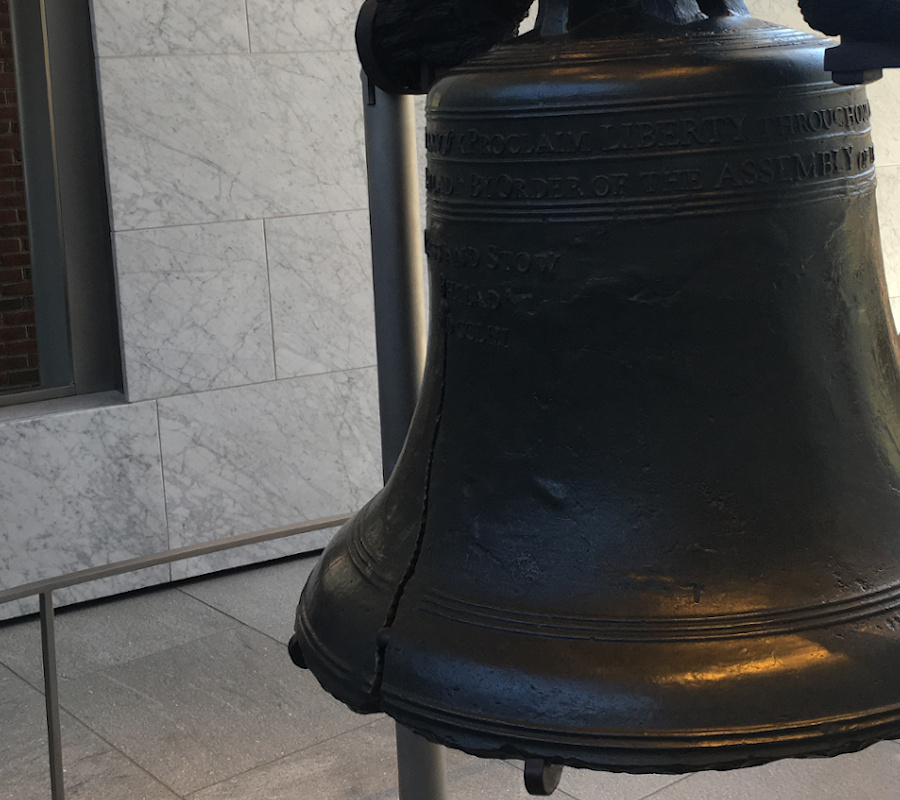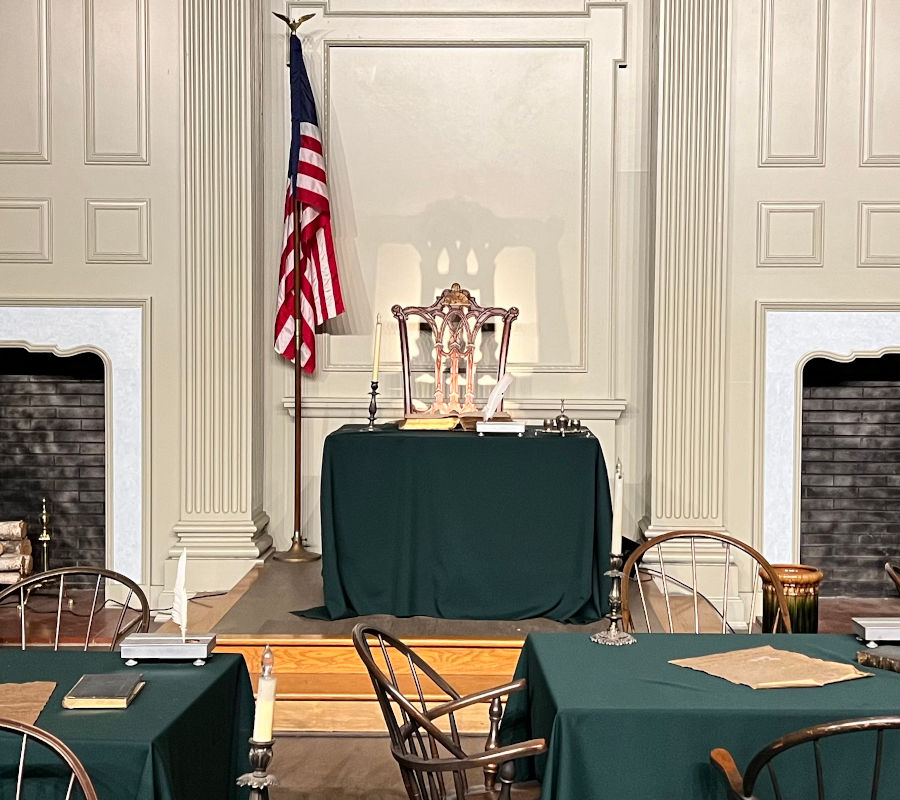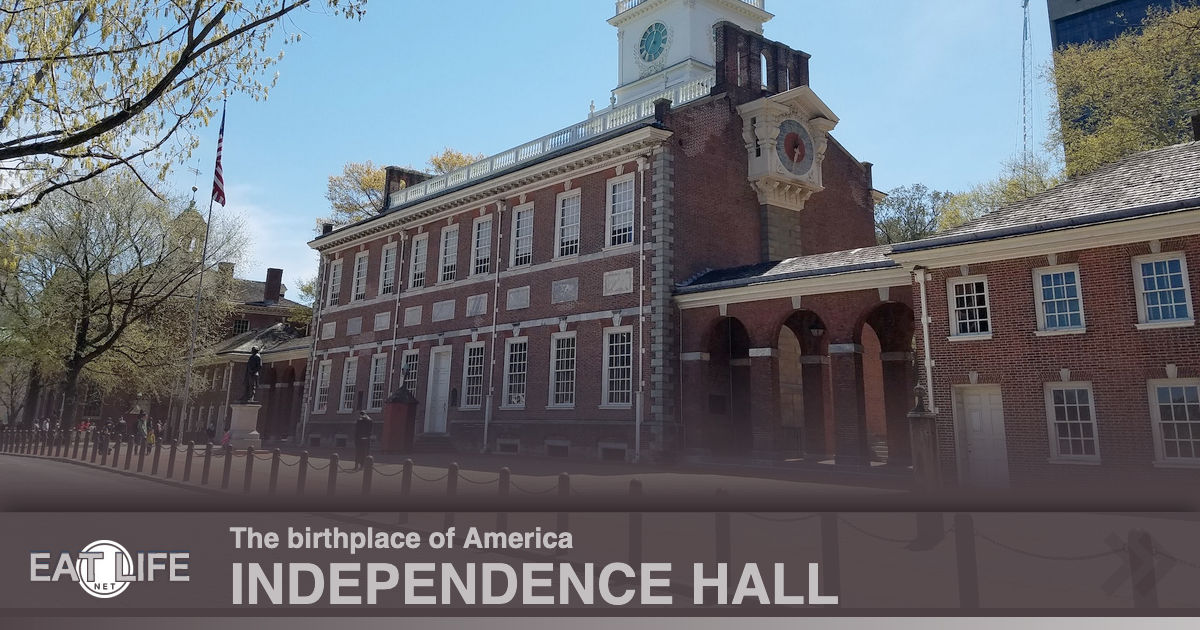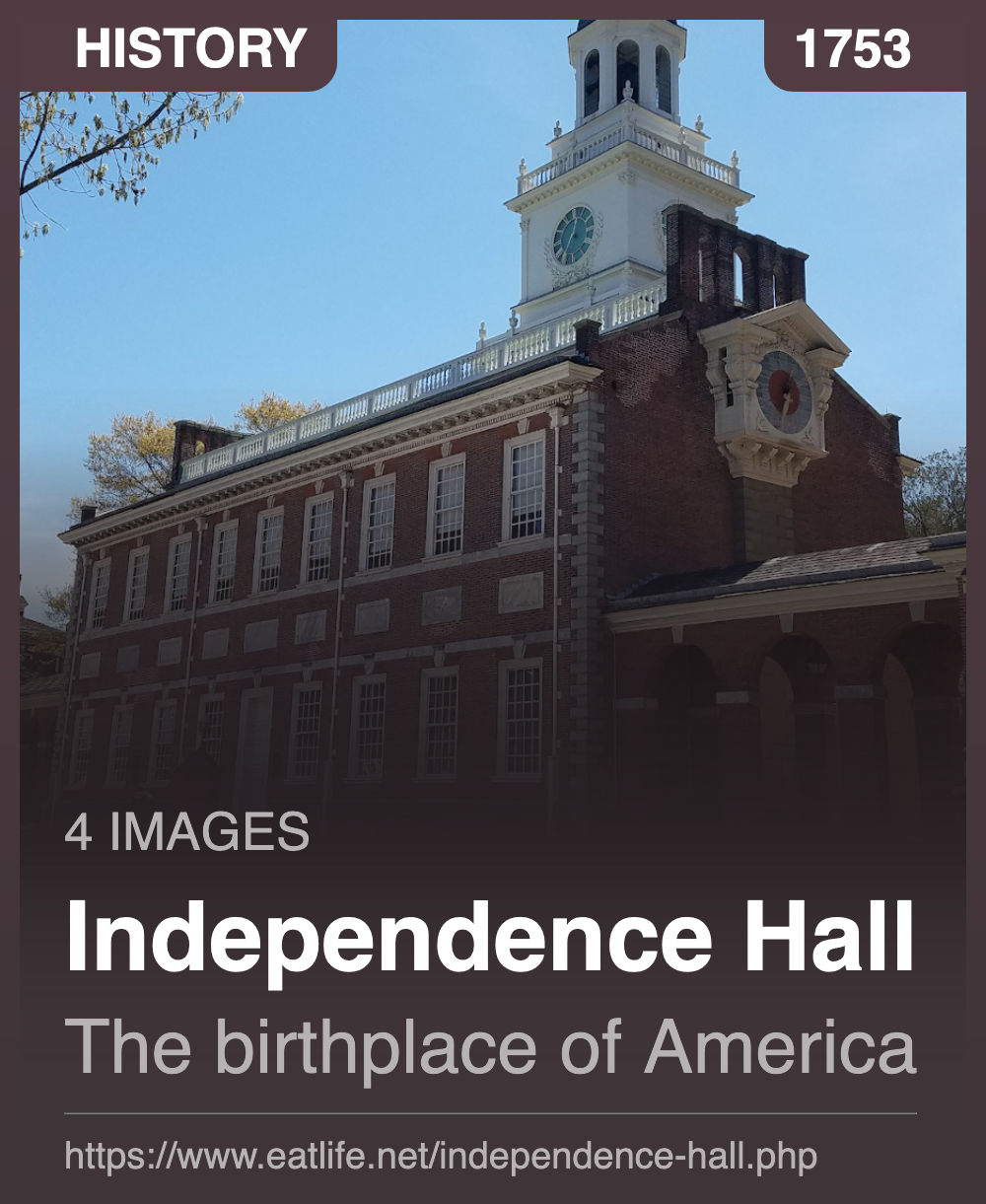Independence Hall
Construction of the Pennsylvania State House, which came to be known as Independence Hall, began in 1732.
It was a symbol of the nation to come.
- At the time it was the most ambitious public building in the thirteen colonies.
- The Provincial government paid for construction as they went along, so it was finished piecemeal.
- It wasn't until 1753, 21 years after the groundbreaking, before it was completed.
- It was the original "Philadelphia lawyer," none other than Andrew Hamilton that oversaw the planning and worked to guarantee its completion.
Independence Hall is, by every estimate, the birthplace of the United States:
- It was within its walls that the Declaration of Independence was adopted
- It was here that the Constitution of the United States was debated, drafted and signed.
Notable among the document's many innovative features is the separation of powers among the legislative (Congress), executive (President), and judicial branches of government. Also important is that the Congress was split into two houses, the upper house (originally in the upper floor of adjoining Congress Hall), and the lower house (main floor of Congress Hall); the first gave equal power to all the states regardless of size and the second gave proportional representation according to size. You have to imagine the debates between the large and small states each attempting to form a government favoring them. You also have to marvel that this compromise was reached at all — a tribute to the extraordinary minds that were working together to make a new nation that could survive and renew itself in the face of unforeseeable obstacles.
The building has undergone many restorations, notably by Greek revival architect John Haviland in 1830, and by a committee from the National Park Service, in 1950, returning it to its 1776 appearance.
Independence Hall Trivia:
- The basement once served as the city's dog pound
- The second floor was once home to Charles Willson Peale's museum of natural history.
- Some historians note that Ben Franklin would occasionally trip other delegates from his aisle seat.
- George Washington, knowing that his opinion would carry undue weight, contributed little to the debate over the Constitution.
- Even though the days were very hot in the summer of 1787, windows were kept closed so others could not overhear their discussions
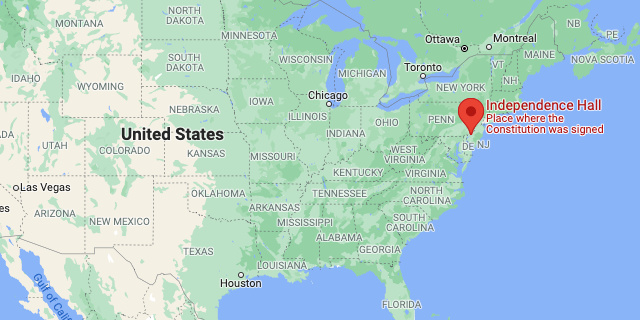
https://www.google.com/maps/place/Independence+Hall
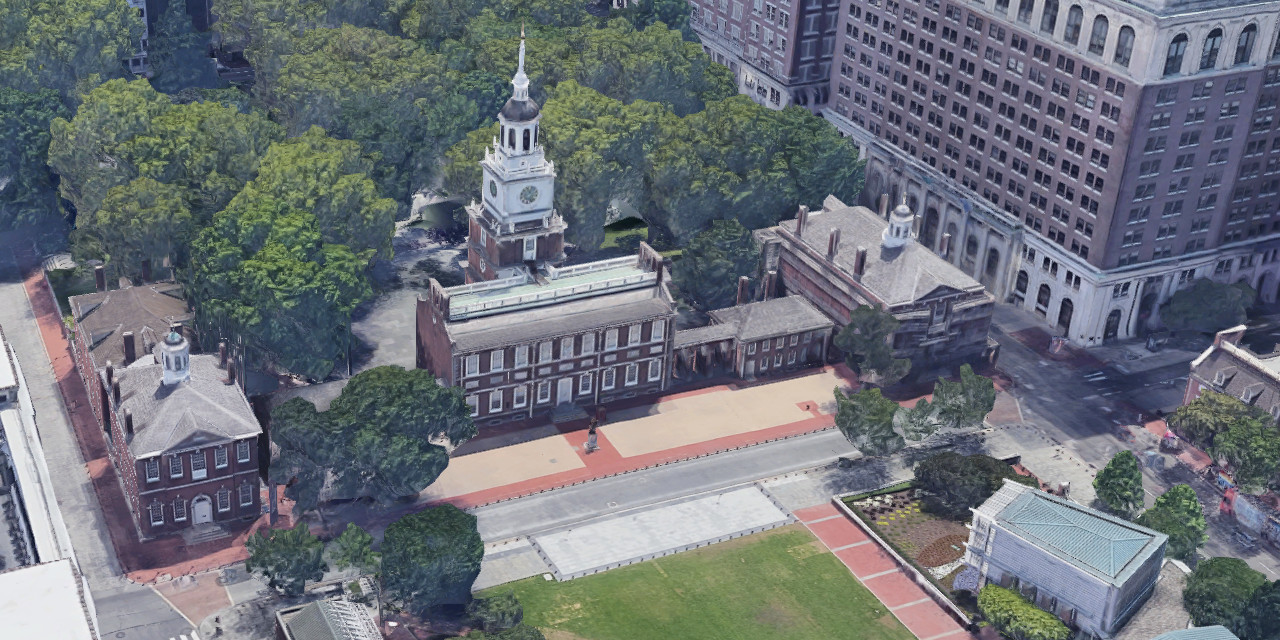
- The area covered with trees right behind Independence Hall is Independence Square
- The angled building bottom right is where the Liberty Bell is.
 UNESCO World Heritage Site:
UNESCO World Heritage Site:The Declaration of Independence was adopted and the Constitution of the United States of America framed in this fine early 18th-century building in Philadelphia. These events, which took place respectively in 1776 and 1787, were conceived in a national context, but the universal principles of freedom and democracy set forth in these two documents have had a profound impact on lawmakers and political thinkers around the world. They became the models for similar charters of other nations, and may be considered to have heralded the modern era of government.
Independence Hall was designed by attorney Andrew Hamilton in collaboration with master builder Edmund Woolley to house the Assembly of the Commonwealth (colony) of Pennsylvania. Begun in 1732 and finished in 1753, it is a dignified brick structure with a wooden steeple that once held the Liberty Bell. The building has undergone many restorations, notably by architect John Haviland in the 1830s and under the direction of the National Park Service beginning in the 1950s, returning it to its appearance during the years when the new country's Declaration of Independence and Constitution were debated and signed. In the Assembly Room, the momentous events that occurred there are explained and their international impact as well as the spread of democracy are discussed.
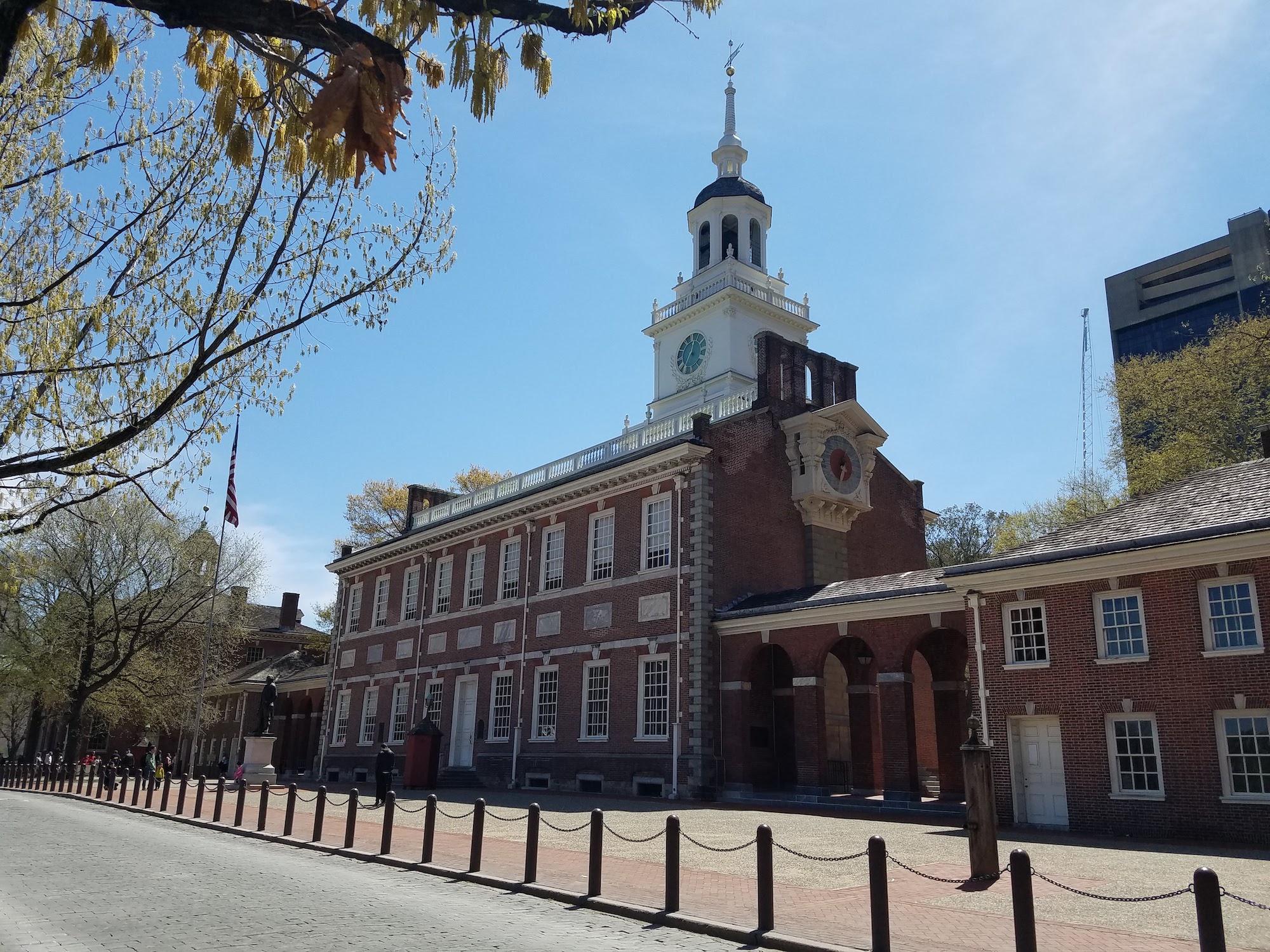
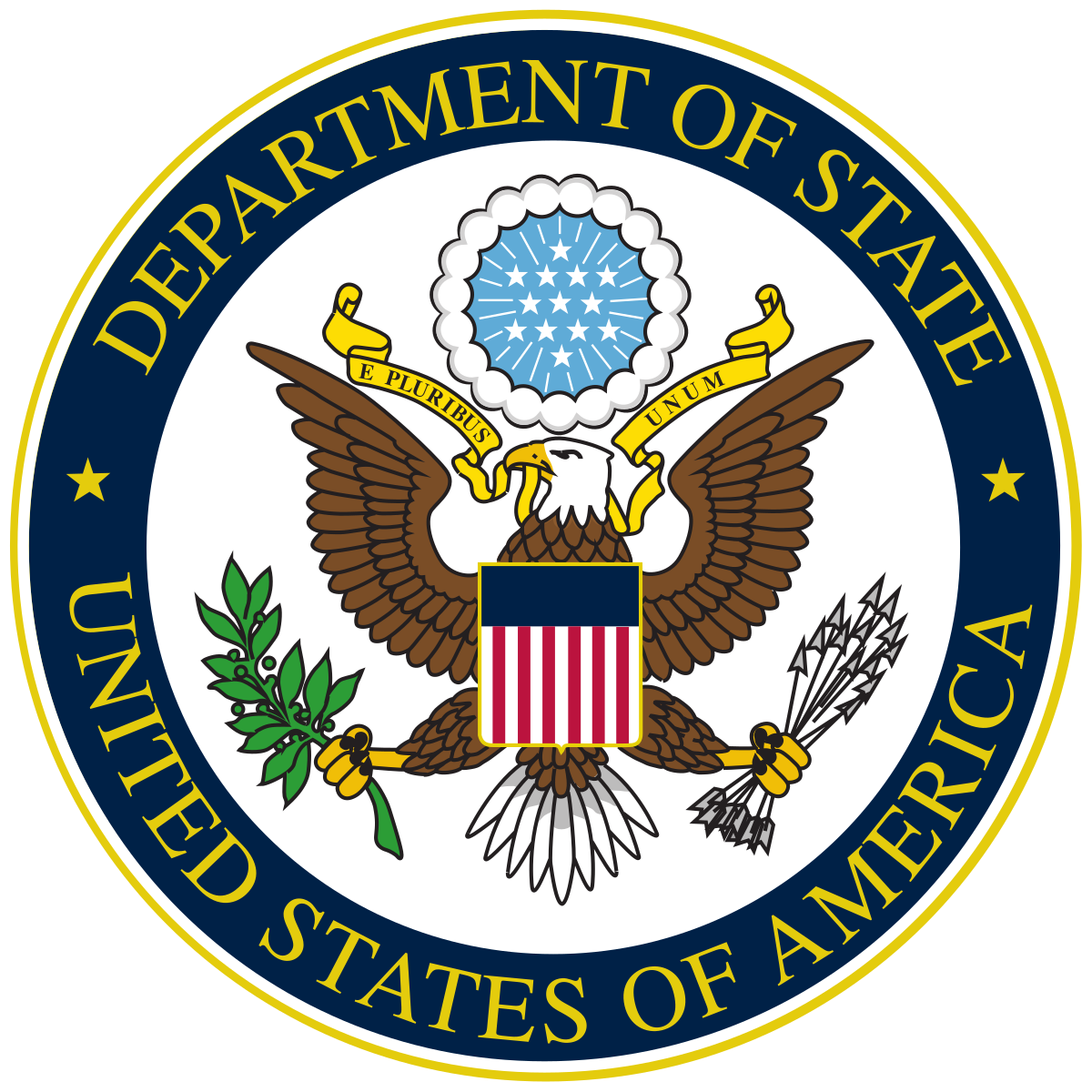 Pennsylvania State House is now called Independence Hall):
Pennsylvania State House is now called Independence Hall):The State House had been built for the provincial government, which for a half century previously had had no official building. Construction on the building began in 1732, and although the Assembly had met in the building as early as 1735, it was not completed until 1748. When completed, the building had a facade 107 feet in length connected by closed arcades, or piazzas, to wing buildings some 50 feet long. The following is a description of the building:
The main building had a decked gable roof, balustraded between the chimneys and surmounted by a centrally located cupola.... The first floor contained two chambers about 40 feet square, separated by a spacious center hall about 20 feet wide.... The State House was not elegantly furnished. Chairs, tables, curtains, screens, and other items purchased for the building were never unduly expensive .... The building appears to have been heated originally by open fireplaces for which stoves were later substituted.
In 1750 the Assembly directed that a tower be erected to contain a staircase and belfry. By 1753 the tower was completed and the State House bell (now called the Liberty Bell) was hung. This was the bell that was rung to announce the adoption of the Declaration of Independence on July 8, 1776.
There have been various alterations of the State House through the years. When the British occupied Philadelphia in 1777-1778, they damaged the State House by converting the first floor into a barracks and making the second floor into a hospital for wounded American prisoners. The old steeple had rotted and become so weak that it was taken down in 1781. A new one was built in 1828. Congress Hall was begun in 1787 and finished in 1789. The City Hall building was begun in 1789 and finished in 1791. These two halls formed part of the complex of which the State House was a part. From 1802 until 1828 Charles Wilson Peale used the Assembly Room and second floor of the State House for a museum and portrait gallery.
Beginning in 1828, there have been a series of restorations, continuing even at the present time. Since 1898 the State House has been a public shrine in Independence National Historical Park.
https://history.state.gov/departmenthistory/buildings/section3
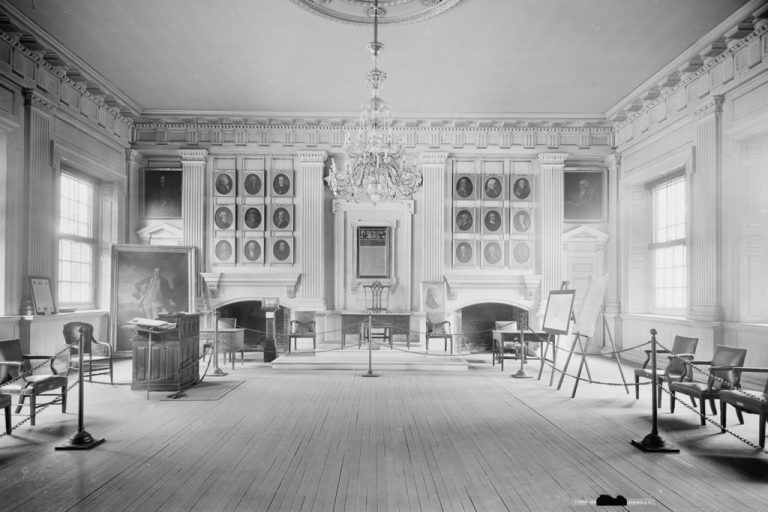
The Assembly Room:
This room housed the Pennsylvania Provincial Assembly.
As a result, this room was known as the Assembly Room, and it was the meeting place of the colonial legislature – and later the state legislature – throughout the second half of the 18th century.
However, this room is most remembered for housing the Continental Congress from 1775 to 1783, and for being the site of the signing of the Declaration of Independence and the United States Constitution.
Throughout the 19th century, the Assembly Room was used for a wide variety of purposes. Many patriotic events were held here, with distinguished visitors such as Henry Clay, Andrew Jackson, and Abraham Lincoln. The bodies of both Clay and Lincoln would later lay in state here in this room, as did the body of John Quincy Adams following his death in 1848. In addition, this room was also used as a museum, displaying a number of objects relating to American Revolution. During the second half of the 19th century, the Liberty Bell was on display here, before being moved to the base of the tower, and the room also housed a large collection of Charles Willson Peale's portraits. Some of these are visible in the first photo, including his famous George Washington at Princeton, which stands in the corner on the left side of the scene.
The Assembly Room later underwent a second major renovation in the mid-20th century, restoring it to its presumed 18th century appearance.
Syng Inkstand:
Today, there are only two artifacts that survive from the Revolutionary period. The oldest of these is the Syng inkstand, which sits on the table at the front of the room in the present-day scene. Made in 1752, this inkstand was used in the signing of both the Declaration of Independence and the Constitution, and it is visible in the first photo, in a small display case in front of the fireplace on the left side.
Rising Sun Armchair:
The other object, and the only surviving piece of furniture from the 18th century, is the chair in the center of the room, which is visible in both photos. This was made in 1779, and it was the seat where George Washington sat while presiding over the Constitutional Convention. It is often known as the Rising Sun Armchair, because of the carved sun on the top of it.
https://lostnewengland.com/2019/11/assembly-room-independence-hall-philadelphia-pennsylvania
The Assembly Room in 2018:
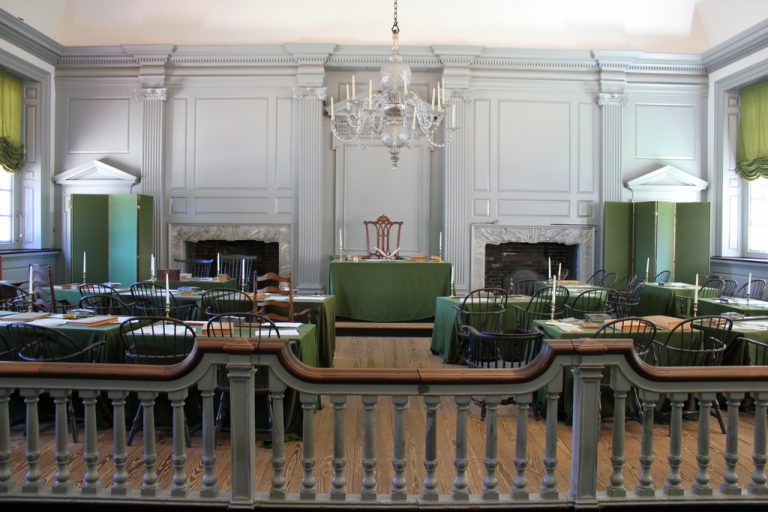
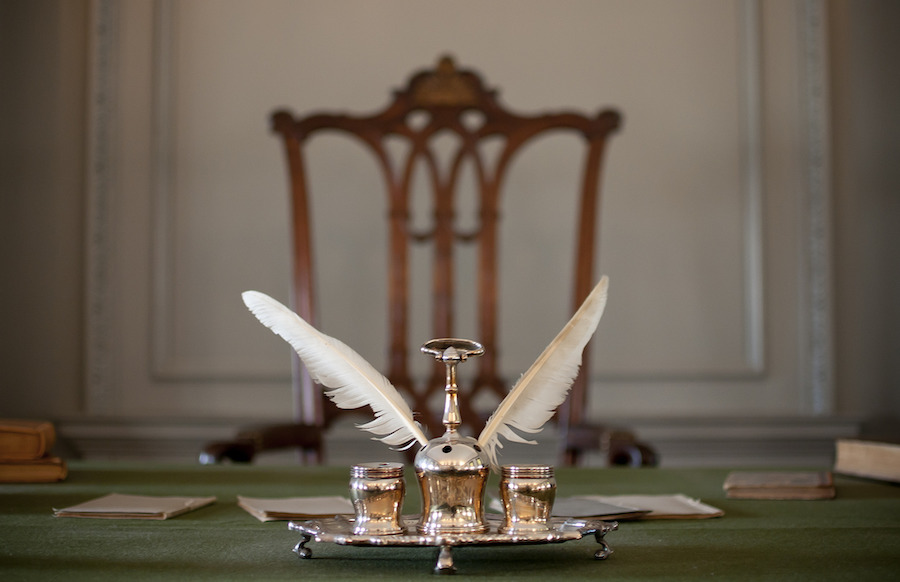
Most likely used by the signers of the Declaration of Independence and U.S. Constitution. The original inkstand is on display in the West Wing of Independence Hall.
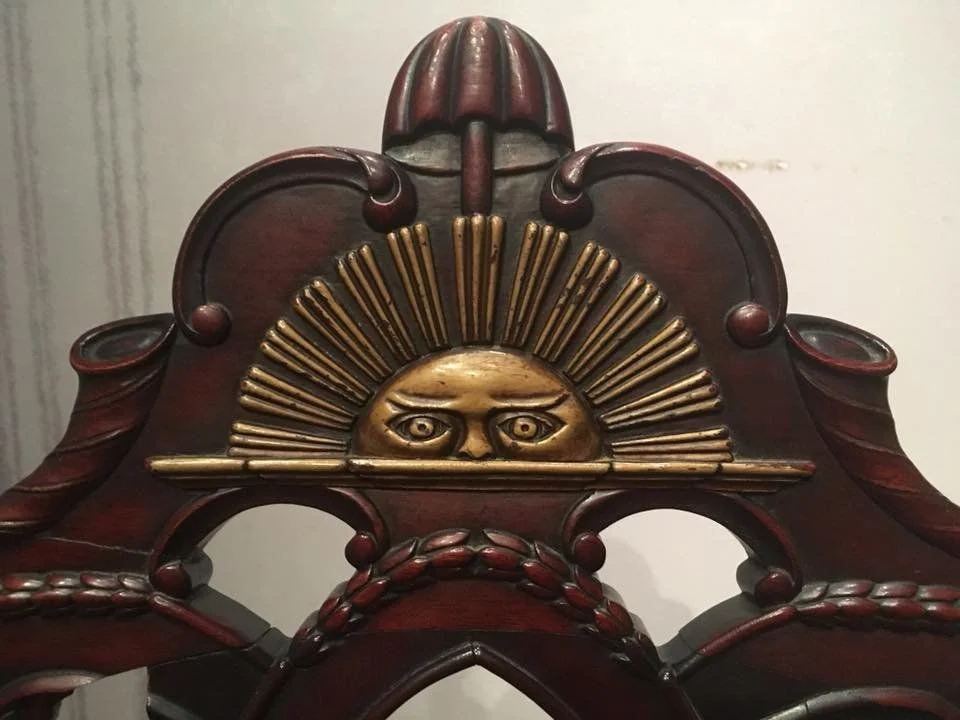
The Pennsylvania Assembly purchased an elaborately carved chair in 1779 to replace one destroyed during the British occupation of the Pennsylvania State House (1777-1778).
George Washington sat in this chair when he was president of the Constitutional Convention in 1787. It is on display in Independence Hall.
It is known as the "Rising Sun" chair because of Benjamin Franklin's hopeful observation about the symbol carved on the headrest. As the convention's work closed, Franklin announced:
I have ... often in the course of the session ... looked at that ‘sun' behind the president without being able to tell whether it was rising or setting: but now at length I have the happiness to know it is a rising sun and not a setting sun.
https://greensboro.com/life/etta-reid-historic-rising-sun-chair-in-which-george-washington-sat-should-inspire-us-to
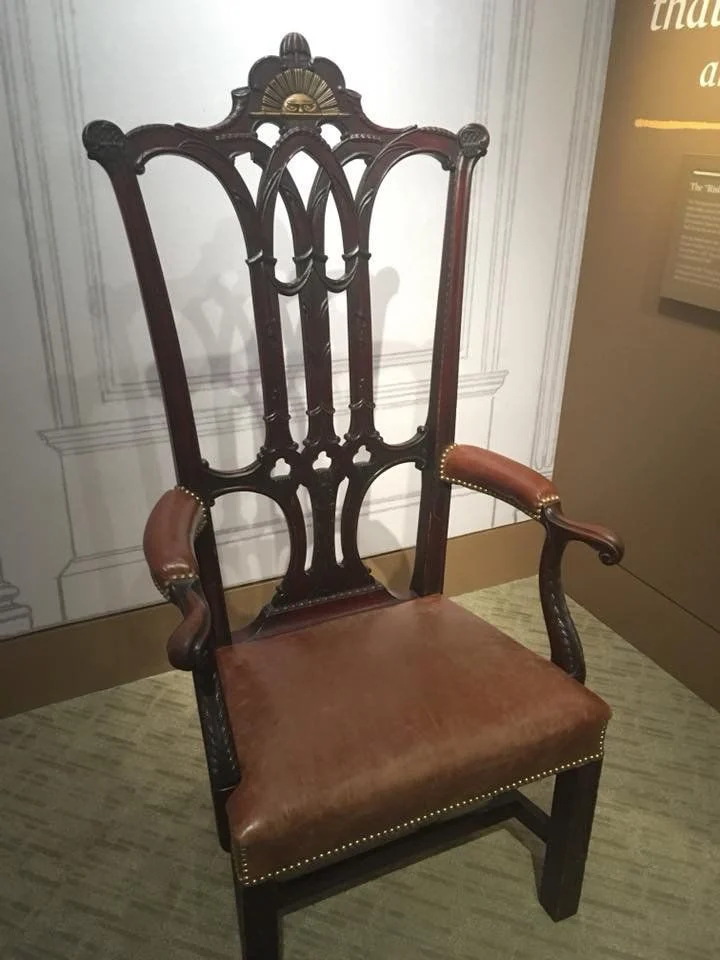
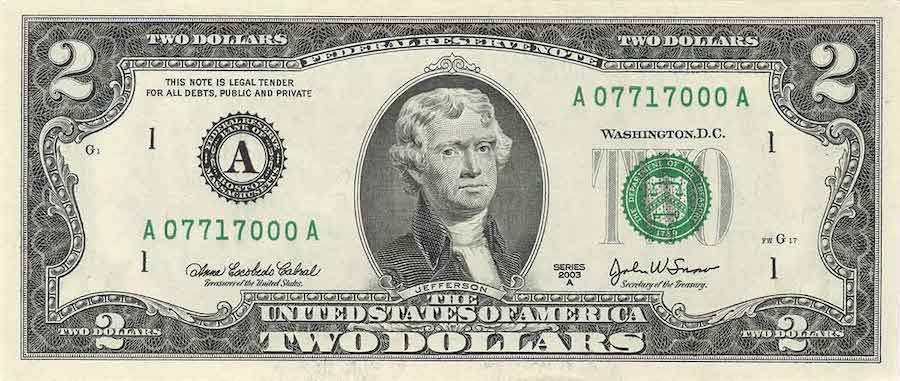
For Series 1976 the decision was made to print a famous vignette on the reverse depicting the presentation of the Declaration of Independence in 1976. The ornate design drew accolades from the numismatic community and the general American populace.
As happened with the dual-dated 1776-1976 Bicentennial coins, countless Americans began hoarding the Series 1976 $2 bills, either because these folks deemed the special notes perhaps too beautiful to spend or, maybe, they were thinking these unusual notes were more valuable than they really are. It's safe to say that a great many non-collectors to this day mistakenly believe that modern-era $2 bills are worth more than face value. So, if you're one of those persons who thinks the $2 bill is a valuable novelty, it may surprise you to learn that the typical, lightly circulated $2 bill encountered today is worth exactly the amount stated on the note: two dollars.
https://www.pcgs.com/news/what-is-my-two-dollar-bill-worth
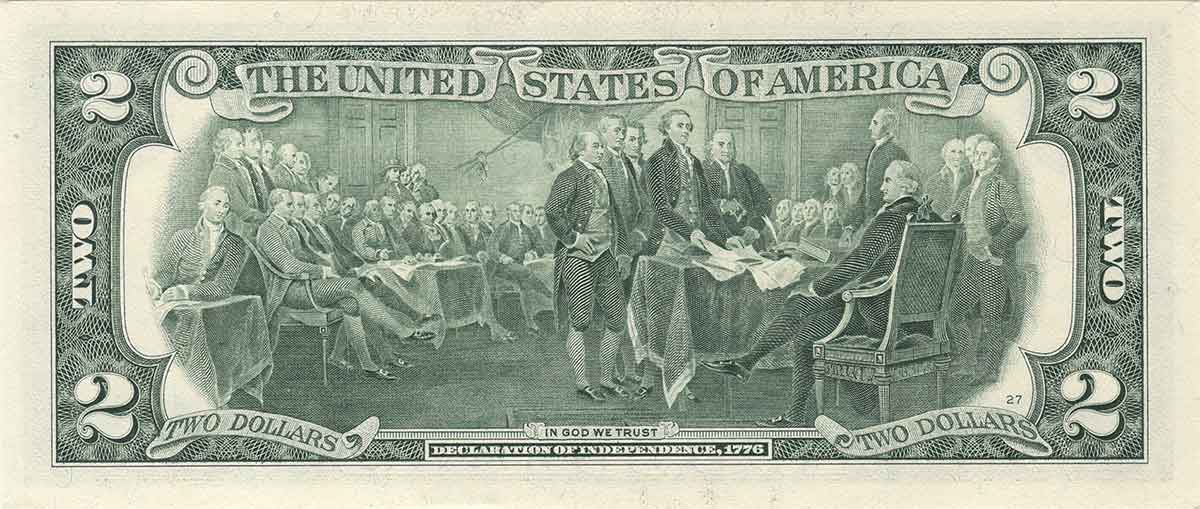
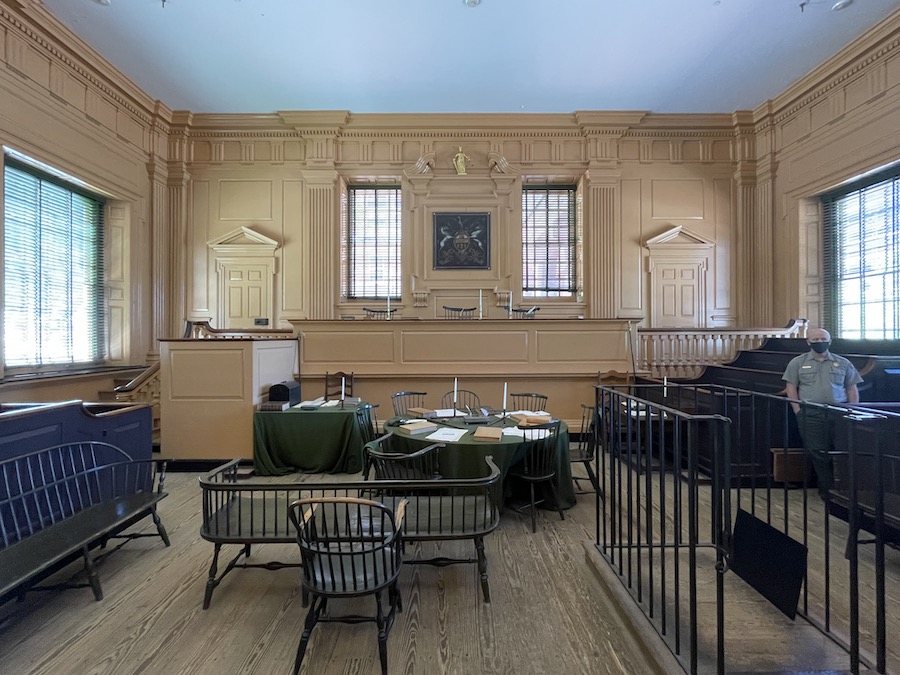
The Supreme Court of Pennsylvania was once housed in Independence Hall when it was built as the Pennsylvania State House in 1732. The period-piece furniture is arranged as it was in colonial times. Three chairs for the judges are visible on a raised dais separated from the rest of the court. A golden statue of Lady Justice holding a balance and drawn sword is seen above. In front, there are chairs and tables for the recording clerk and attorneys. To the right, the jury box, to the left a spot for spectators and family members. So far, so good. But, in front is a cage-like enclosure with iron bars where the accused had to stand throughout the entire proceedings. He could be questioned and he would have had to answer. He was referred to as the "accused."
Our jurisprudence has evolved with time. We hold dear the doctrine that a man "is innocent until proven guilty." Hence, we use the term "defendant," not "accused." The defendant is represented by his legal counsel. He sits with them. He does not stand in a cage. He may refuse to answer any questions if he so chooses. He cannot be forced to testify against himself so as not to self-incriminate. This is guaranteed by the Fifth Amendment to our constitution.
https://ranjanmukherjee.com/2021/05/15/the-court-house-and-liberty-bell-independence-hall-part-2
Before independence the coat of arms of Great Britain (the lion and the unicorn) was prominently displayed on the wall behind the judges. This was torn down and replaced with the coat of arms of Pennsylvania after Independence:
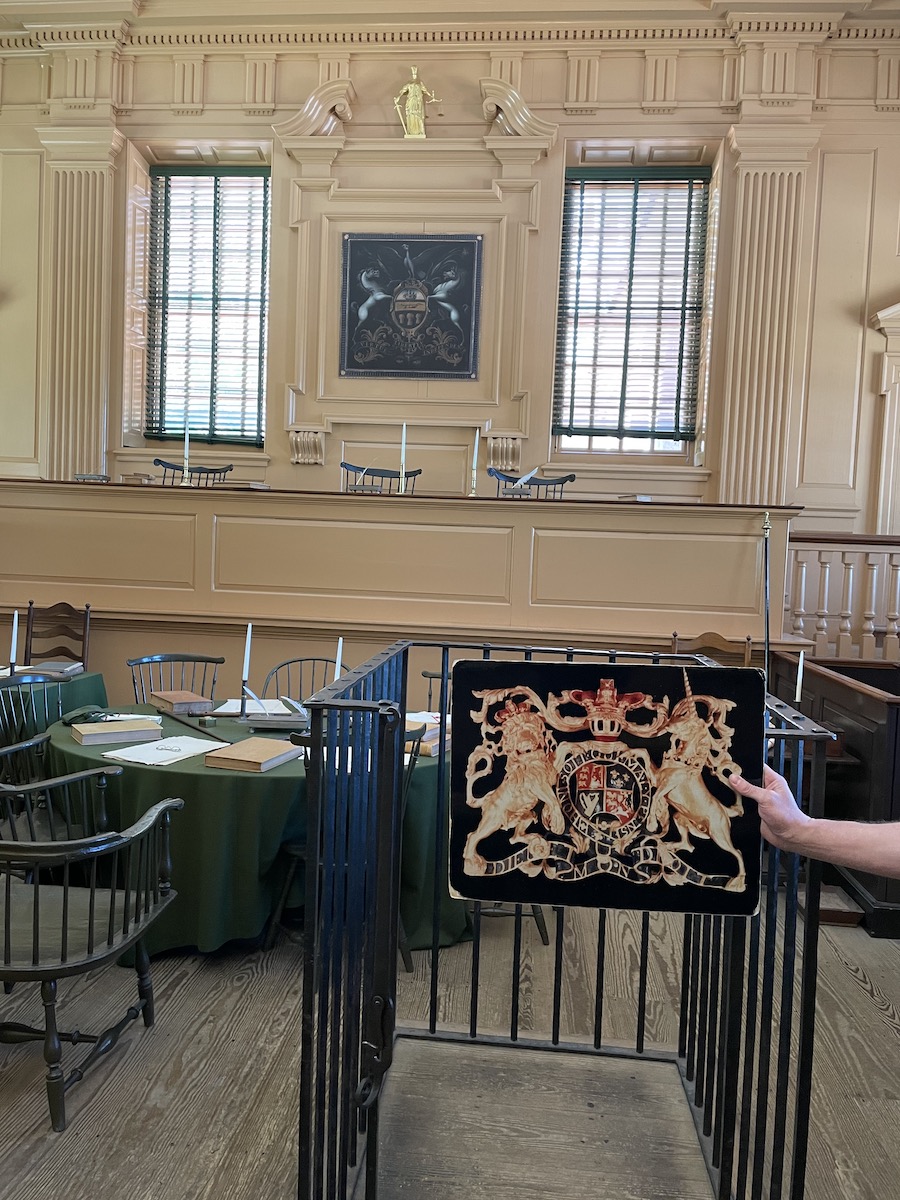
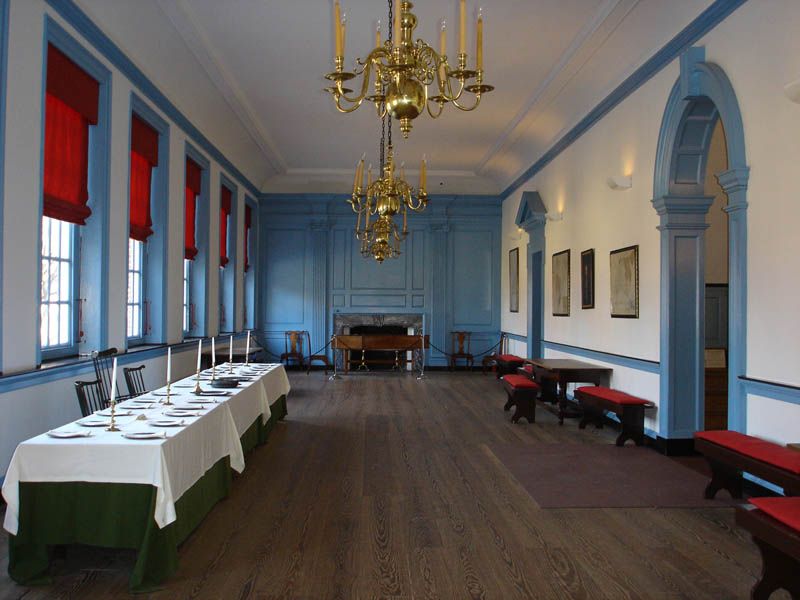
Upstairs is the Long Gallery, a large room that runs the length of the front of the building which was designed as a reception area. The Long Gallery has hosted banquets for visitors to the Royal Governor of the Colony of Pennsylvania, served as a military prison during the Revolutionary War, and was even once home to the Peale Museum, one of the earliest museums in America.
https://www.theconstitutional.com/blog/2016/03/15/independence-hall-history
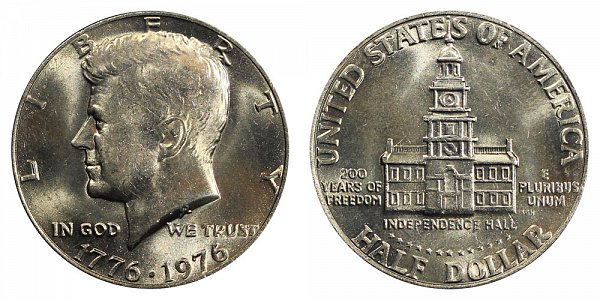
The bicentennial Kennedy Half Dollar features a 1776-1976 date on the obverse and a portrait of Philadelphia Pennsylvania's Independence Hall with the words "200 YEARS OF FREEDOM" on the reverse of the coin to celebrate the 200th anniversary of the United States of America. This coin was produced in both years of 1975 through 1976 so there were no 1975 coins.
https://www.usacoinbook.com/coins/2902/half-dollars/kennedy/1976-P
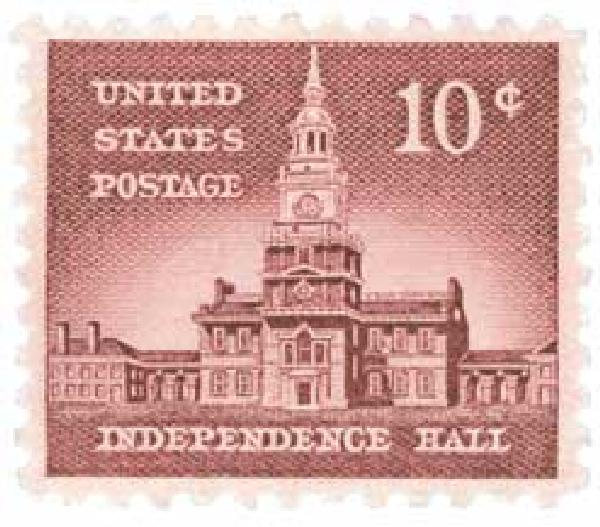
Independence Hall was on the 1956 10 cent Stamp
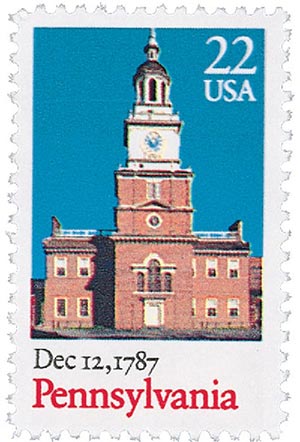
Independence Hall was on the 1956 22 cent Pennsylvania Stamp
https://www.mysticstamp.com/Products/United-States/1044/USA
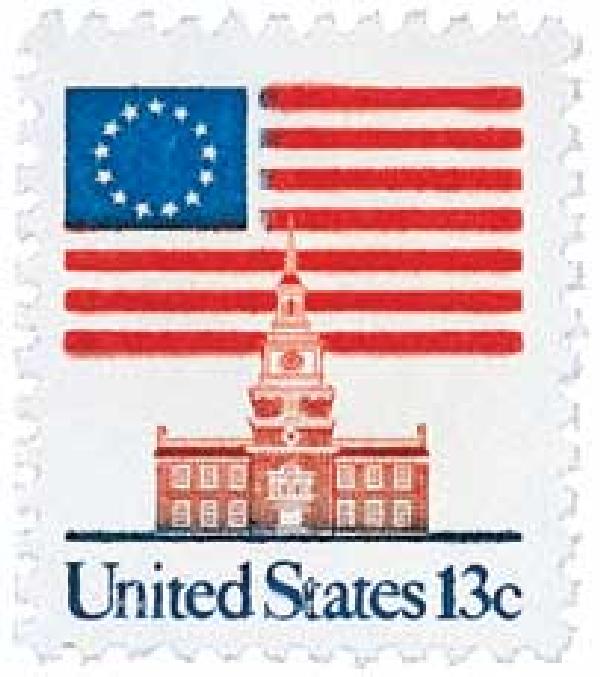
Independence Hall was on the 1975-1981 13 cent Stamp
https://www.mysticstamp.com/Products/United-States/1622C/USA
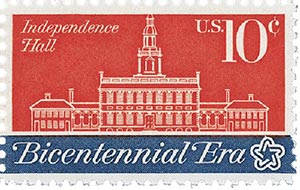
Independence Hall was on the 1974 10 cent Stamp
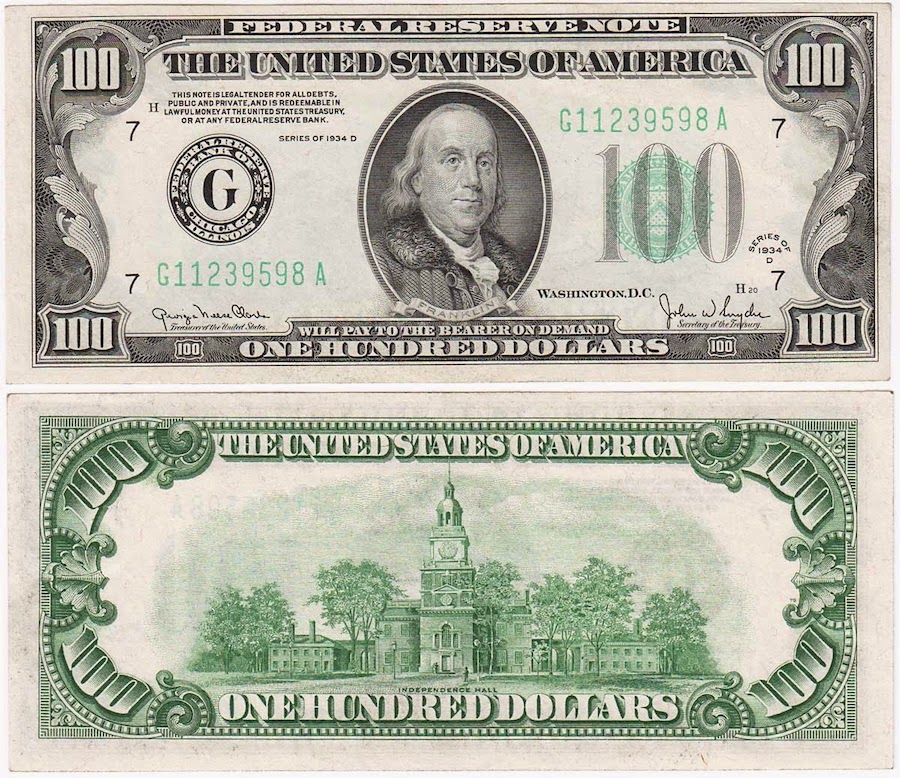
The United States one hundred-dollar bill ($100) is a denomination of United States currency featuring statesman, inventor, diplomat and American founding father Benjamin Franklin on the obverse of the bill. On the reverse of the banknote is an image of Independence Hall. The $100 bill is the largest denomination that has been printed since July 13, 1969, when the denominations of $500, $1,000, $5,000, and $10,000 were retired.
The bills are also commonly referred to as "Benjamins", in reference to the use of Benjamin Franklin's portrait on the denomination, "C-Notes", based on the Roman numeral for 100. The bill is one of two denominations printed today that does not feature a President of the United States; the other is the $10 bill, featuring Alexander Hamilton. It is also the only denomination today to feature a building not located in Washington, D.C., that being the Independence Hall located in Philadelphia on the reverse.
According to former Federal Reserve Chairman Ben Bernanke, more than two-thirds of all $100 notes circulate outside the United States making it the most popular banknote.
http://www.quizmastertrivia.com/2015/05/todays-article-100-bill.html
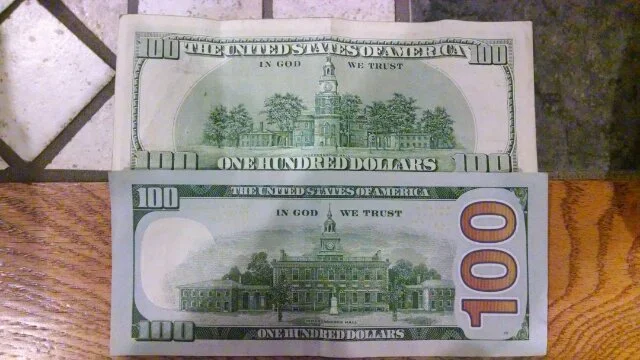
Both views of independence hall are from around the same time period (1920s), however the new version is a view from the rear of the building. This is done so that counterfeiters now have to create entirely new molds for that picture.
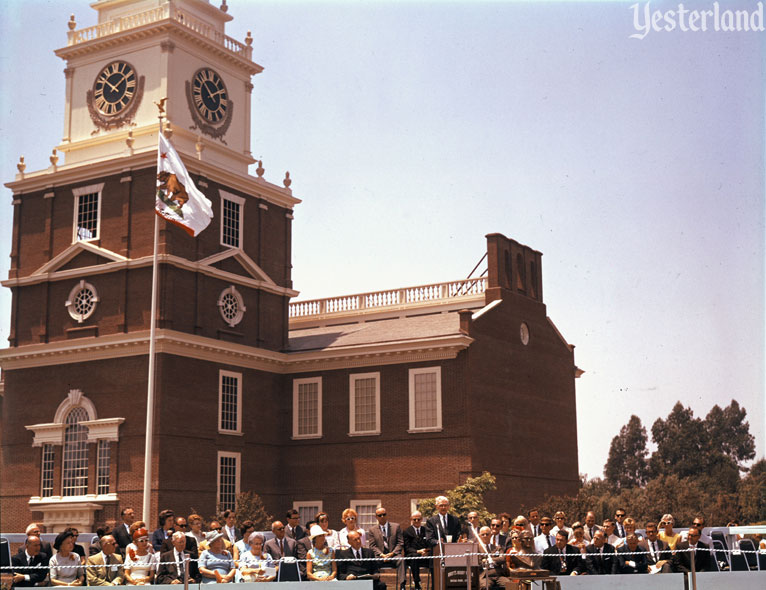
Why did Walter Knott build Independence Hall? Here's his answer:
Why build Independence Hall? There are many reasons. It is not only the most historical building in America, but it is one of our most beautiful and stately structures.
Our greatest documents — the Declaration of Independence and our Constitution — were both worked out and signed there.
Just as Ghost Town vividly reminds us of our gold rush beginnings in California, Independence Hall takes us back to the very founding of our country.
Truly, this building is the birthplace of America and the greatest shrine to individual freedom in all the world.
Like Ghost Town, Independence Hall is a milestone in the history of the Farm. It is a reminder of some of the most crucial events in all of our history.
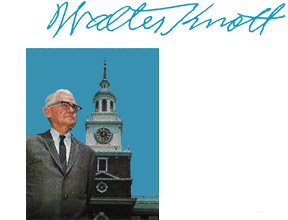
Independence Hall was built with 130,000 bricks, each with fingerprints and 200 years of weathering, to look as much like the historic landmark in Philadelphia as possible. The replica is 167 feet from ground level to the top of the weather vane.
When Hollywood needs Independence Hall for a movie or television show, there's no need for the cast and crew to travel to Philadelphia.
Knott's no longer charges admission to visit Independence Hall. It's outside the gated admission area, near the Knott's Soak City waterpark. Parking is free for one hour without validation or three hours with a food or merchandise purchase. The guided tours are long-gone. Now you just walk right into Independence Hall and explore it at your own pace.
https://www.yesterland.com/independence.html
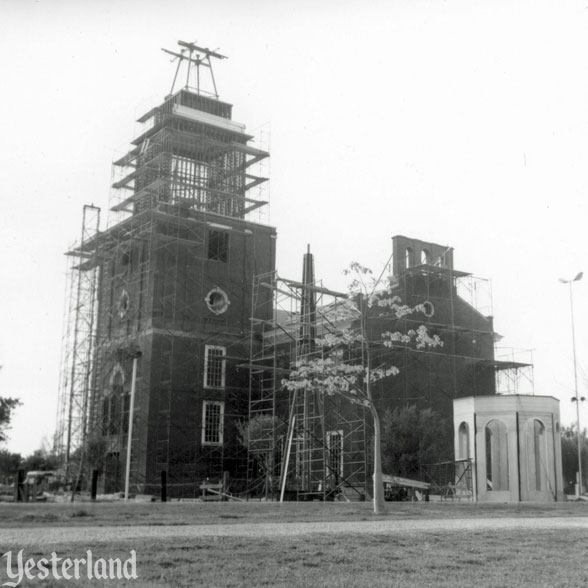
Declaration of Independence - This document unified the colonies in North America who declared themselves independent of the Kingdom of Great Britain and explained their justifications for doing so. It is celebrated annually with a national holiday for U.S. Independence Day on July 4th.
Independence Hall is a historic civic building in Philadelphia, Pennsylvania in which both the United States Declaration of Independence and the United States Constitution were debated and adopted by America's Founding Fathers.Independence Hall:
- Completed in 1753 as the Pennsylvania State House.
- It served as the capitol for the Province and Commonwealth of Pennsylvania until the state capital moved to Lancaster in 1799
- It became the principal meeting place of the Second Continental Congress from 1775 to 1783
The Second Continental Congress was the body of representatives from each of the thirteen British North American colonies
- June 14, 1775 The Continental Congress nominated George Washington as commander-in-chief of the Continental Army in the Assembly Room
- July 26, 1775 The Congress appointed Benjamin Franklin to be the first Postmaster General of what would later become the United States Post Office Department
- July 4, 1776 The United States Declaration of Independence was approved there and the Declaration was read aloud to the public in the area now known as Independence Square.
- The Congress continued to meet there until December 12, 1776 after which the Congress evacuated Philadelphia (because the British Army occupied Philadelphia).
- Independence Hall was the site of the Constitutional Convention in the summer of 1787
A convention held in Independence Hall in 1915, presided over by former US president William Howard Taft, marked the formal announcement of the formation of the League to Enforce Peace, which led to the League of Nations and eventually the United Nations.Preservation:
- The original steeple was demolished in 1781 due to structural problems.
- The wings and hyphens were demolished in 1812 and replaced by larger buildings designed by architect Robert Mills.
- A new, more elaborate steeple designed by William Strickland, constructed in 1828. The north entrance was also rebuilt during this period.
- In 1898, the Mills wings were removed and replaced with replicas of the originals, but the Strickland steeple was left in place.
- In 1948, the building's interior was restored to its original appearance.
In early 1816, the Commonwealth of Pennsylvania sold the State House to the City of Philadelphia, with a contract signed by the governor. The deed, however, was not transferred until more than two years later. The City of Philadelphia has owned the State House and its associated buildings and grounds since that time.
 https://www.nps.gov/inde/planyourvisit/independencehall.htm
https://www.nps.gov/inde/planyourvisit/independencehall.htm143 South 3rd Street
Philadelphia, PA 19106
